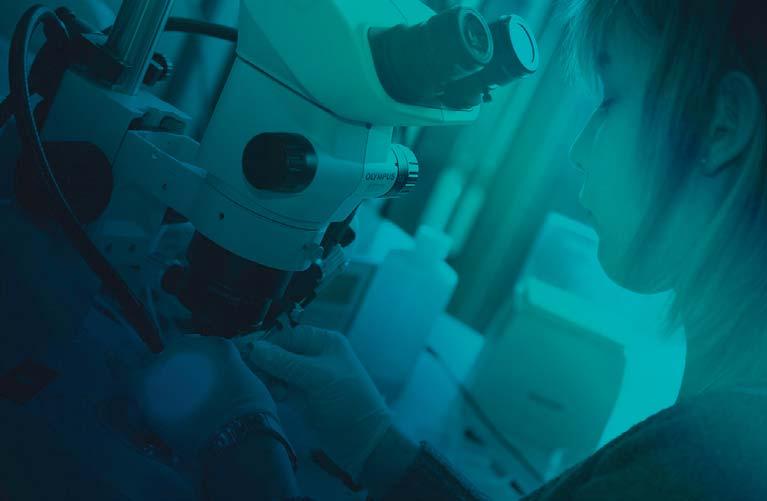Pioneering for patients Galapagos, headquartered in Mechelen, is active in the research and development of synthetic drugs (“small molecules”) with a new mode of action based on the discovery of new targets. Galapagos focuses on medications that address the cause, not just the symptoms, of diseases with a high medical need. Piet Wigerinck, Chief Scientific Officer at Galapagos, provides an overview of current and future developments.
© Frank van Delft / Galapagos
T e
© Frank van Delft / Galapagos
c
h
n
o
l
o
g
y
Galapagos
© Frank van Delft / Galapagos
hat are Galapagos' main activities currently? We have been active in research and development of small molecules for over 20 years now. In 2020, we intend to take an important next step as a biotech company: the launch of our first own medication. It is a potential treatment option in inflammatory diseases, and it is currently under review for approval with the European Medicines Agency. After more than 20 years in business, this is a very special moment for Galapagos. We are currently active in the following therapeutic areas: inflammatory diseases, fibrosis, metabolic diseases and infectious diseases, and we have potential drug candidates in the pipeline in each of these areas.
Piet Wigerinck, Chief Scientific Officer at Galapagos
Key figures for Galapagos
a v n
o
What is Galapagos' expertise in the discovery and development of small molecule drugs and their new mechanisms of action? Using human primary cells and patient cells, Galapagos discovers the proteins (targets) that play a key role in causing diseases. We then develop small molecules that inhibit these targets, restore
© Frank van Delft / Galapagos
n I
the balance and thereby positively influence the course of the disease. In order to do this efficiently and effectively, Galapagos has developed a unique technical platform and is also able to rely on a toolbox with a collection of more than 6,000 genes that code for potential targets. Galapagos is one of the few companies that focuses on discovering new targets. Thanks to our many years of focus, we have developed extensive expertise in this area. Which Phase I clinical trials are you currently carrying out? There are currently several phase 1 research programmes in progress on inflammation and fibrosis.
Can you give some examples of ongoing Phase II and Phase III clinical trials? Which diseases are they targeting? Several trials are situated in these phases, including for the potential treatment of Idiopathic Pulmonary Fibrosis (IPF), Crohn's Disease and psoriatic arthritis. In addition, we also have an extensive clinical programme on osteoarthritis walking.
t
i
o
n
W
60
Could you tell us a little more about the three main programmes from target to proof of concept? We have found the targets in a range of different therapeutic areas thanks to our technical platform. For example, we have developed molecules that have gone through the various clinical phases, or that are or will be in the research phase. Hopefully, we will be able to make these potential medications available to all patients in the next few years. After a long time, and providing everything goes according to plan, our first medication will be available to doctors and patients. We are in the final clinical phase with a potential medication for fibrosis and next year we are awaiting data that will allow us to decide whether to go to phase III for our osteoarthritis programme.

















































































































